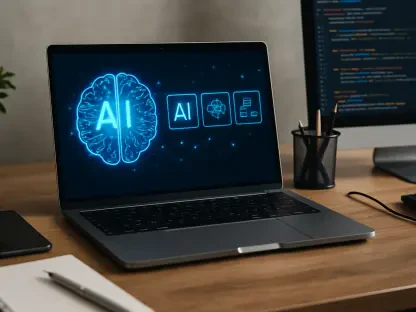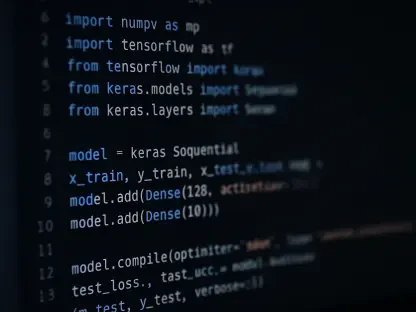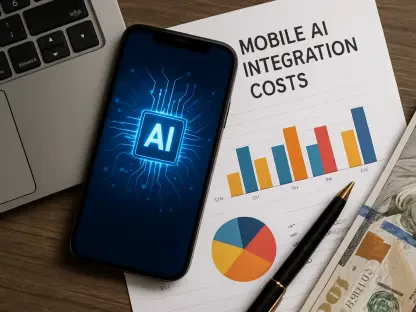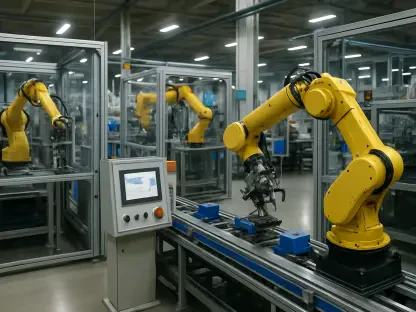In a world increasingly shaped by digital innovation, few sectors stand to gain as much from technological advancement as healthcare, where the stakes are often life and death, and the need for efficient solutions is paramount. Software developers have emerged as unsung heroes in this transformation, crafting solutions that streamline operations, enhance access to care, and ultimately save lives. One such trailblazer is Sandipkumar Shiyani, a Senior Software Developer with nine years of experience, whose work has redefined how healthcare systems operate. Through projects that address physician shortages, improve information access, and optimize critical services, Shiyani’s contributions highlight the profound impact a single coder can have. This exploration delves into how his innovative tools, from scalable job portals to efficient content management systems, are reshaping the industry. It also underscores a broader truth: when technology is applied with purpose, it can bridge systemic gaps and empower communities, proving that code is not just a technical skill but a catalyst for societal good.
Crafting Scalable Foundations for Growth
Sandipkumar Shiyani’s career offers a compelling case study in the power of scalability within healthcare technology. His Regional Physician Job Portals began as a targeted solution for a single area but quickly evolved into a multi-regional platform through clever modular design. This approach cut development time by an impressive 30%, allowing healthcare organizations to expand their reach without starting from scratch each time. Such scalability ensures that as demand for medical professionals grows, the tools to recruit them can keep pace. Beyond just technical achievement, this adaptability means rural and underserved regions gain faster access to doctors, addressing a persistent challenge in healthcare equity. Shiyani’s foresight in building systems that grow with need sets a benchmark for how digital solutions can support long-term goals, ensuring resources are used effectively across diverse geographies.
Equally notable is Shiyani’s work on content management systems (CMS), which scaled from a handful of sites to over 15, with infrastructure ready for 50 more. This expansion wasn’t merely about numbers but about creating a robust framework that healthcare providers could rely on for consistent information delivery. Whether disseminating wellness resources or critical updates, these systems became lifelines for communities needing reliable data. The ability to handle increased traffic and content without performance hiccups reflects a deep understanding of future demands. By focusing on scalable architecture, Shiyani has enabled organizations to redirect energy from technical troubleshooting to patient care. This strategic vision highlights how foundational design choices in software development can ripple outward, amplifying impact across entire healthcare networks and setting a standard for sustainable digital growth.
Designing for the End User
A distinguishing feature of Shiyani’s projects is an unwavering commitment to user-centered design, ensuring technology serves those who interact with it daily. Many healthcare staff lack deep technical skills, yet Shiyani’s tools, like simplified platforms for job postings, empower them to manage critical tasks effortlessly. During the COVID-19 crisis, his solutions for vaccine appointment scheduling became vital, cutting through complexity to connect people with life-saving services. This focus on intuitive interfaces means that even under pressure, users can rely on systems that prioritize clarity over complication. By tailoring digital tools to real-world needs, Shiyani ensures they don’t just function but truly facilitate, breaking down barriers between technology and its intended audience in high-stakes environments.
Further amplifying this impact, Shiyani integrated SEO and Google Analytics into his platforms, achieving a 40% increase in visibility and a 20% boost in user engagement. These enhancements ensured that essential health information, from clinic locations to emergency protocols, reached broader audiences, especially those in underserved areas. The significance of this cannot be overstated—when critical updates are buried in search results, lives can be at risk. By leveraging data-driven strategies, Shiyani turned digital tools into beacons for communities seeking care. This marriage of accessibility and analytics demonstrates a nuanced approach, where technology not only solves immediate problems but also builds pathways for ongoing connection. It’s a reminder that in healthcare, user-friendly design isn’t a luxury but a necessity, directly influencing how effectively services are delivered to those who need them most.
Optimizing Resources Through Efficiency
Efficiency stands as a cornerstone of Shiyani’s contributions, transforming how healthcare organizations allocate their limited resources. Through the development of reusable components in his CMS projects, he achieved a remarkable 25% reduction in operating costs. These savings weren’t just numbers on a balance sheet; they allowed redirected funds to support patient-centric programs, such as community outreach or subsidized care initiatives. In an industry often strained by tight budgets, such cost-cutting innovations are invaluable, enabling providers to focus on their core mission of healing rather than wrestling with bloated expenses. Shiyani’s knack for streamlining processes through smart coding offers a blueprint for balancing fiscal responsibility with impactful service delivery, proving that efficiency can be a powerful driver of positive change.
Complementing these financial benefits, Shiyani’s modernization of technology stacks with tools like Docker and Kubernetes delivered a 35% reduction in page load times across systems. Faster, more reliable platforms mean healthcare staff can access information or update records without frustrating delays, directly improving workflow and patient interactions. This technical overhaul also enhances system stability during peak usage, a critical factor during health crises when digital tools face unprecedented demand. By prioritizing performance, Shiyani ensures that technology supports rather than hinders frontline workers, who often operate under intense pressure. These advancements underscore a broader point: in healthcare, where every second counts, optimizing digital infrastructure isn’t just about speed but about enabling better care outcomes through seamless, dependable operations.
Creating Tangible Social Change
The social implications of Shiyani’s work extend far beyond lines of code, touching lives in meaningful ways. His Regional Physician Job Portals have directly tackled the persistent issue of physician shortages in rural and underserved areas by streamlining hiring processes. What once took weeks or months can now be accomplished with greater speed and precision, ensuring communities gain access to medical professionals sooner. This isn’t merely a logistical win; it addresses a fundamental inequity in healthcare access, where remote regions often struggle most. By leveraging technology to connect doctors with opportunities in these areas, Shiyani’s tools help close gaps that have long hindered quality care, demonstrating how targeted digital solutions can address deeply rooted systemic challenges with lasting impact.
Additionally, Shiyani’s digital platforms have played a crucial role during global health emergencies, such as the COVID-19 pandemic, by facilitating vaccine appointment workflows. Thousands were able to secure timely care thanks to these systems, a small but vital contribution amid widespread uncertainty. His projects also expand access to health information for low-income populations, ensuring critical resources aren’t out of reach for those with limited means. From wellness tips to emergency updates, these tools empower individuals to make informed decisions about their health. This focus on equity through technology reveals a profound truth: when digital innovation is guided by a commitment to social good, it can dismantle barriers and uplift entire communities, proving that code can be a force for justice as much as for efficiency in the healthcare landscape.
Shaping the Future of Digital Healthcare
Shiyani’s work aligns seamlessly with the sweeping digital transformation reshaping healthcare, a sector where over 4.2 billion people now depend on online health services. His emphasis on scalable, participatory design and data-driven solutions mirrors an industry-wide pivot toward balancing cutting-edge innovation with universal accessibility. As demand for digital tools surges amid constrained resources, his projects serve as a model for how to meet these challenges head-on. By creating platforms that adapt to growing needs while remaining intuitive for users, Shiyani contributes to a broader movement redefining healthcare delivery. His efforts reflect a consensus that technology must evolve not just for efficiency’s sake but to ensure equitable access, setting a precedent for how developers can drive systemic progress in a digitally reliant world.
Beyond individual projects, Shiyani’s role as a systems architect and mentor to junior developers positions him as a leader in healthcare IT’s evolution. His advocacy for best practices and hands-on guidance help cultivate a new generation of talent equipped to tackle future challenges. This dual focus on building tools and building people underscores his influence, as he shapes not only current systems but also the mindset of those who will maintain them. Recognition as a key player in multi-regional initiatives further cements his impact, showing how technical expertise can translate into industry-wide standards. As healthcare continues to embrace digital solutions, figures like Shiyani highlight the importance of visionaries who can navigate complex demands, ensuring technology remains a tool for inclusion and advancement across diverse populations and settings.
Connecting Code to Community Well-Being
Reflecting on Shiyani’s journey, it’s clear that his ability to merge technical prowess with human-centric goals sets a powerful example for healthcare innovation. His projects, whether modernizing tech stacks or crafting intuitive platforms, consistently bridged the gap between complex systems and practical needs. Each solution, from job portals to CMS integrations, demonstrated an understanding that technology’s value lies in its application to real-world problems. Leadership in multi-regional efforts further showcased how a single developer’s vision can influence vast networks, improving outcomes for countless individuals. Looking back, his contributions during critical times, like global health crises, illustrated that code could be a lifeline, connecting vulnerable populations to essential care with unprecedented efficiency.
As the healthcare sector moves forward, Shiyani’s legacy offers actionable insights for future progress. Developers and organizations should prioritize scalability and user accessibility in every digital tool, ensuring they can grow with demand and serve diverse users. Embracing data-driven strategies to enhance visibility and engagement can further amplify outreach, particularly for underserved communities. Additionally, fostering mentorship and collaboration within the tech space will build a foundation for sustained innovation. These steps, inspired by past achievements, can guide the industry toward a future where technology and humanity remain intertwined, delivering care that is both cutting-edge and compassionate to all who need it.









